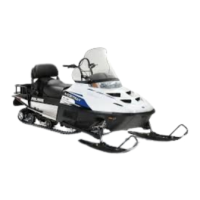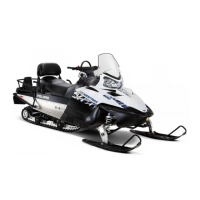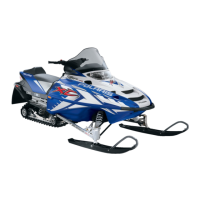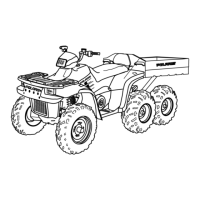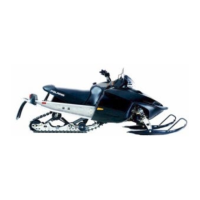8.35
Steering and Suspension Systems
8
9923396 - 2007-2012 EDGE/Widetrak LX Service Manual
©2011 Polaris Sales Inc.
RYDE FX MONO-TUBE SHOCK
DISASSEMBLY
Procedures for the proper disassembly and assembly of
Ryde FX gas charged IFP and emulsion mono-tube shock
absorbers.
1. Remove the shock(s) from the vehicle.
2. Before unscrewing pre-load springs, measure the
compressed length of the installed spring and mark
position for reinstallation.
3. If the shock incorporates a spring, remove the spring
and all collateral retainers.
4. Wash the shock body in parts cleaner; then dry with
compressed air to remove sand and dirt.
5. Remove bearing, sleeve and/or bushings from lower
shock mount eyelet. Secure the lower mount of the
shock in a vise. The use of soft jaws is recommend to
prevent damage or marks to the shock.
6. Remove the small button head screw from the
pressure valve assembly.
7. Depressurize the shock.
8. Internal Floating Piston Shocks, using a slotted
screwdriver, loosen the pressure valve assembly
counter-clockwise two full revolutions allowing the
gas pressure to fully escape past the pressure valve
assembly O-ring.
9. Emulsion Shocks: With the shock inverted and the
piston rod fully extended, secure the lower mount of
the shock in a vise. Allow a couple of minutes for the
gas pressure to separate from the oil and rise to the
top. Using a rag as a shield to prevent spraying gas
and oil; place rag over top the pressure valve
assembly and slowly loosen the valve assembly with
slotted screw driver three full revolutions, allowing all
the gas pressure to escape past the pressure valve
assembly O-ring.
10. Allow all the gas pressure to escape before
proceeding with the removal of the pressure valve
assembly. Pressurized gas and shock oil could eject
the valve assembly from the cylinder resulting in
bodily injury.
11. Using a slotted screwdriver, remove the pressure
valve assembly from the lower end mount. Account for
an O-ring.
12. Using an adjustable face spanner (PN PS45262), fully
loosen and remove cylinder head assembly.
13. Pour the oil out of the shock body. Discard old oil into
an approved storage container and dispose
appropriately. Never reuse damper oil during shock
rebuild.
14. Using the I.F.P extraction tool thread the tool into the
I.F.P and pull upwards, removing the I.F.P from the
shock body. Account for wear band and an O-ring.
Note: Not applicable for emulsion shock
15. Clean the inside of the shock body using clean parts-
cleaning solvent and blow dry using compressed air.
16. Place the shock piston rod upper mount in bench vise,
begin piston and valve removal. Arrange parts
removed in the sequence of disassembly. The piston
should have the flat slots facing the nut end (as
highlighted in black).
17. Items to inspect: Piston rod for straightness, nicks or
burrs. Cylinder Head Assembly / DU Bearing clean,
inspect, or replace. Inside of shock body for
scratches, burrs or excessive wear. Teflon piston and
I.F.P wear band for cuts, chipped or nicked edges, or
BEFORE SERVICING A GAS SHOCK IT IS IMPORTANT THAT
ALL THE GAS PRESSURE BE DISCHARGED FROM THE UNIT.
R
EFER TO THE INSTRUCTIONS LISTED BELOW FOR THE
PROPER PROCEDURE OF DISCHARGING THE GAS PRES-
SURE FROM A SHOCK. PROTECTIVE EYE WEAR SHOULD BE
WORN TO AVOID RISK OF INJURY WHILE SERVICING RY-
DEFX GAS CHARGED MONO-TUBE SHOCKS.
WHEN REMOVING THE SPRING FROM A SHOCK THAT UTILIZ-
ES A FIXED LOWER RETAINER; THE USE OF A PROPER
SPRING COMPRESSOR SHOULD BE USED TO AVOID RISK OF
BODILY INJURY.
WHEN USING COMPRESSED AIR TO DRY COMPONENTS,
PROTECTIVE EYE WEAR SHOULD BE WORN TO AVOID RISK
OF INJURY.
IT IS IMPORTANT THAT THE GAS SHOCK BE RETAINED IN
THE VISE BY THE LOWER MOUNT. ANY OTHER METHOD
OF SECURING THE CHOCK BODY DURING THESE PRO-
CEDURES MAY DEFORM THE SHOCK BODY CYLINDER.
NITROGEN GAS IS UNDER EXTREME PRESSURE. USE
CAUTION WHEN RELEASING NITROGEN GAS FROM
SHOCK. PROTECTIVE EYE WEAR SHOULD BE WORN TO
AVOID RISK OF INJURY.
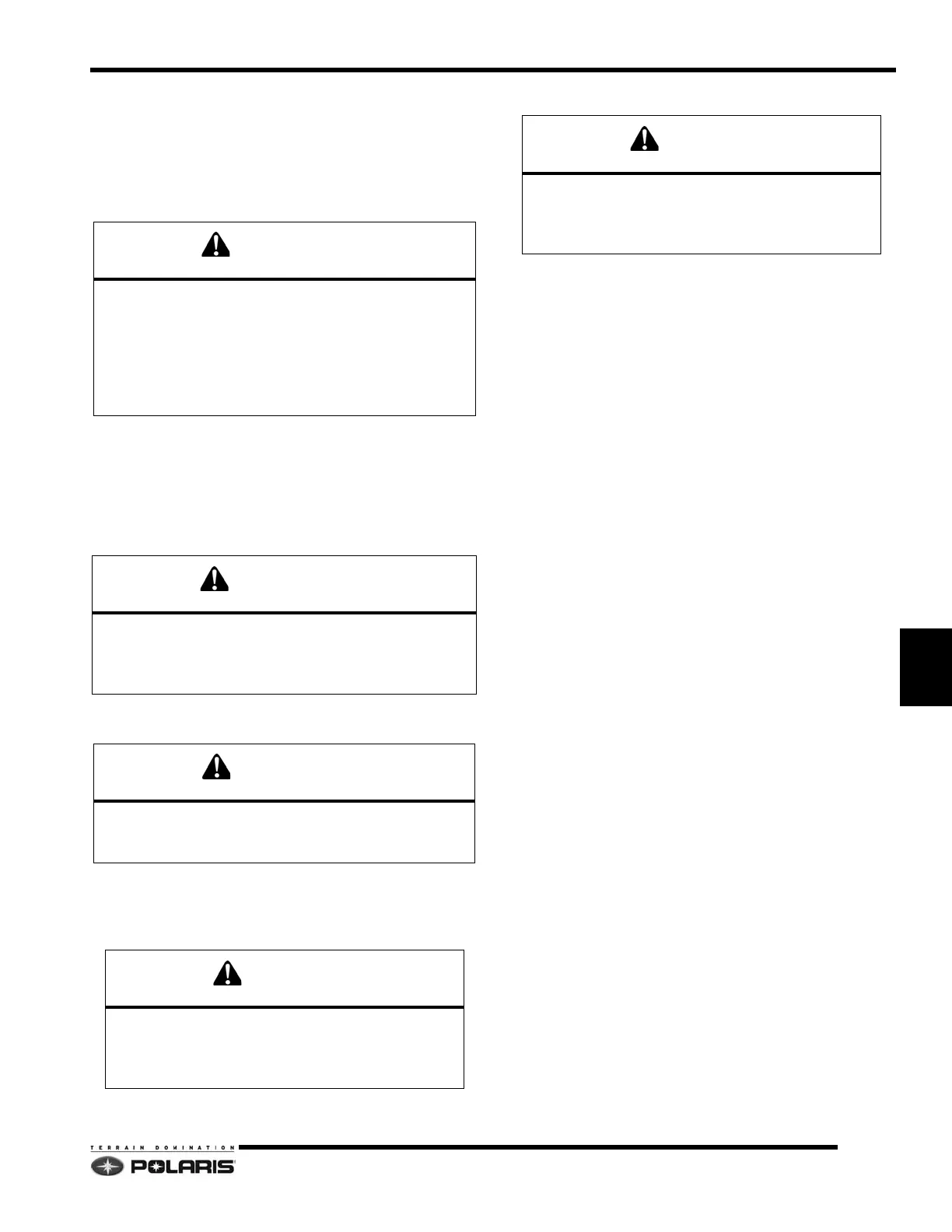